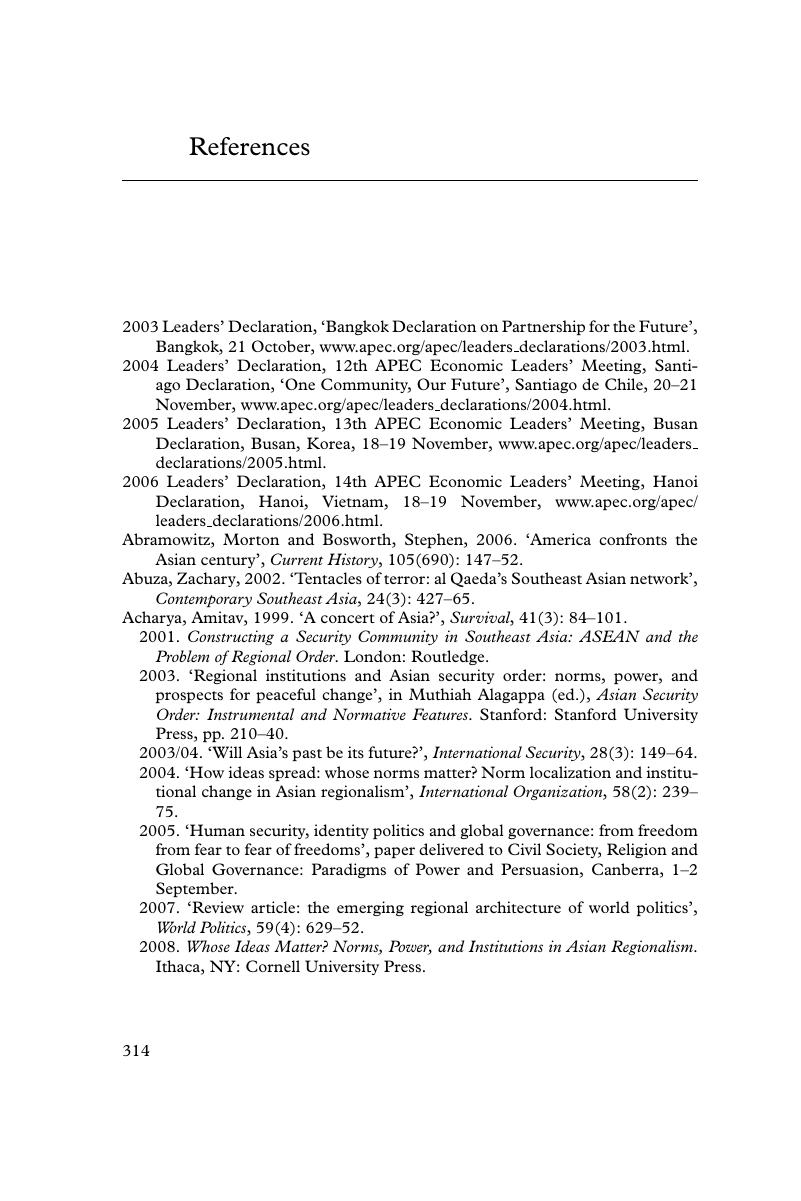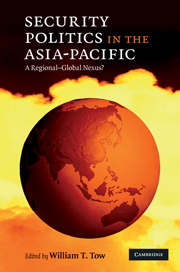References
Published online by Cambridge University Press: 05 June 2012
Summary

- Type
- Chapter
- Information
- Security Politics in the Asia-PacificA Regional-Global Nexus?, pp. 314 - 351Publisher: Cambridge University PressPrint publication year: 2009



